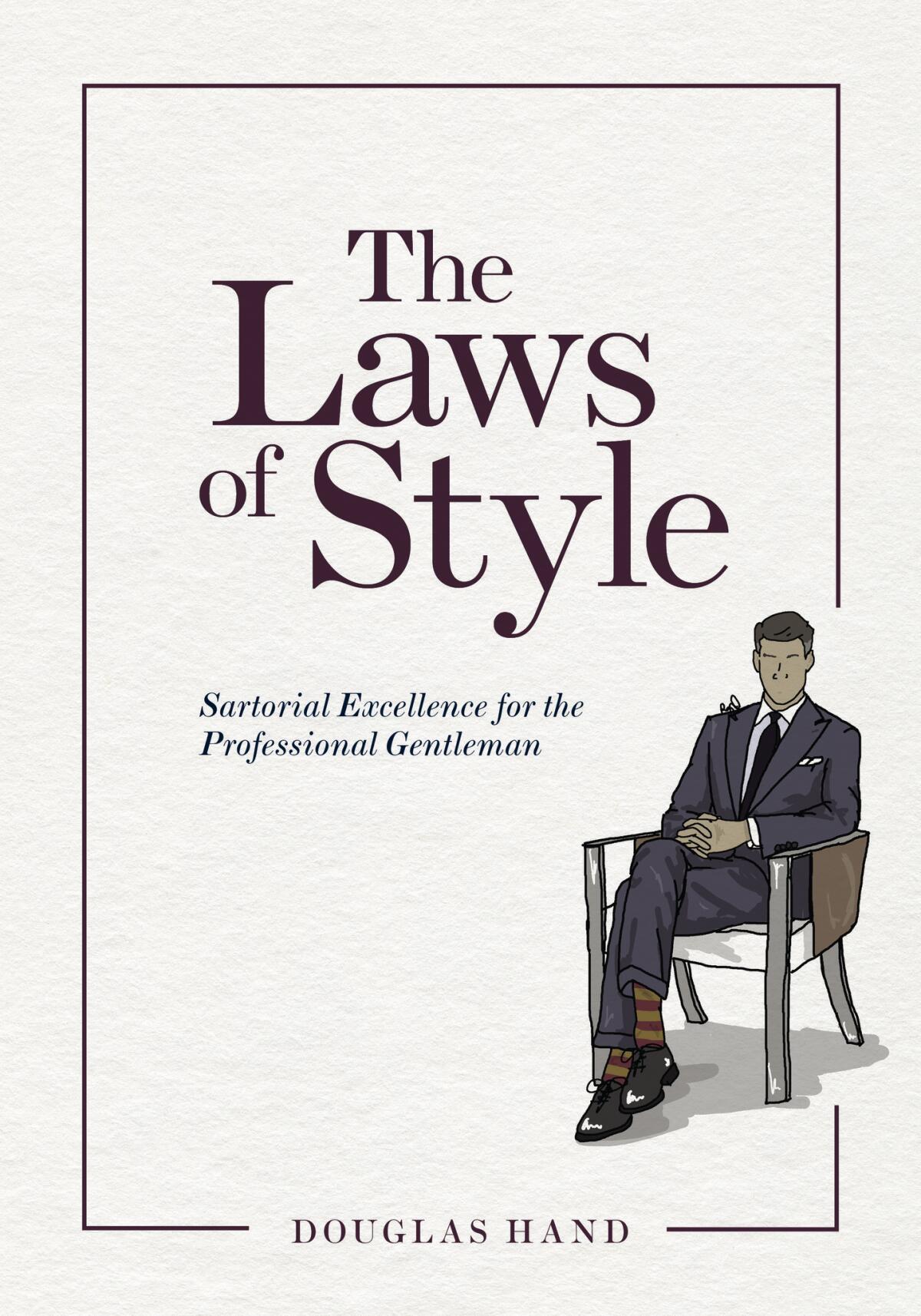‘The Laws of Style’ for men have many nuances
- Share via
Legal documents are generally pretty dry and often hard to decipher. But fashion lawyer Douglas Hand has created an easy to read, tongue-in-cheek take on some well-known legal documents that is intended to help his fellow attorneys navigate not the courtroom, but the fashion minefield.
The American Bar Association commissioned Hand to write the book, called “The Laws of Style: Sartorial Excellence for the Professional Gentleman,” and it’s intended to help white-collar professionals — yes, he defines white collar in chapter one — dress appropriately to advance their career.
And Hand knows of what he speaks.
He’s a partner in the firm of Hand Baldachin & Amburgey, which specializes in fashion and lifestyle companies and counts Rag & Bone, Phillip Lim and Public School among his clients. He’s also a member of the Business Advisory Committee of the Council of Fashion Designers of America, and an adjunct professor of fashion law at both NYU School of Law and Cardozo School of Law, where he sits on the board of advisers for the Fashion, Arts, Media and Entertainment Law Center. He is also on the Fashion Institute of Technology Foundation board of directors as well as FIT’s Couture Council.
And he’s a well-dressed man, usually opting for a well-tailored suit during the week from brands including Rag & Bone, Todd Snyder, Michael Bastian and others. On the weekends, he’s more apt to be found in Nike or Adidas activewear.
In the foreword to the book, former Bergdorf Goodman fashion director Nick Wooster writes that Hand is: “Neat but not annoyingly precise,” and stands out not just for his clothes but for “his intelligence, wit and capability for action.”
So Hand is certainly qualified to school other attorneys in the “great benefit of the suit as a garment, teach some laws and encourage you to reach beyond your comfort zone to attain degrees of personal style,” Wooster writes.
Hand sets the tone in the introduction, starting each entry with “whereas,” and ending with “now, therefore.” The body of the book includes often-humorous footnotes — one in the first chapter reads: “I know, I know, I’ve defined professional gentleman three times now” — and several chapters end with the phrase: “Ignorantia juris non excusat,” which, for those whose Latin is a little rusty, translates to: “Ignorance of the law is no excuse.”
“I wanted it to read like a law review or agreement,” Hand said, “but tongue in cheek.”

This is Hand’s first book and he said he found the process “an interesting one.”
He organized it around items, including the 55 laws that he details throughout and summarizes at the end. Some are no-brainers, like always tucking a dress shirt into trousers, or never wearing a business suit without a tie, or not wearing gym clothes to the office or carrying a briefcase but not a sports wallet with a Velcro closure. Others are more straightforward: The Professional Gentleman shall dress in a manner that is elegant and capable; The Professional Gentleman shall not dress more affluently than his clients; The Professional Gentleman shall not be recognized as ‘fashionable,’ and the Professional Gentleman shall not use a golf umbrella on city sidewalks.
“Here are the guidelines,” he explained, “but if you’re truly reading and listening, you’re going to want to break them.”
To promote the book, which is being published by the ABA, Hand will host a private event during New York Fashion Week: Men’s on Tuesday night. He plans to follow that up with a series of readings and book signings at men’s stores in New York, Los Angeles and Chicago.
In addition to attorneys, he hopes the book will appeal to bankers, accountants, consultants and any other man lumped into the white-collar bucket. He also hopes to appeal to students. “I think they’ll find it a useful read,” he said, adding that the “business casual” attire they’re used to wearing is “fraught with a lot of different choices.”
At the end of the day, Hand doesn’t want men to dress in uniforms, but instead find a way to create their own personal style while still dressing appropriately. So the final chapter speaks to “being comfortable, confident and creative enough to break the laws.”
He writes: “I’m not advising that you become a sartorial peacock. After all, while regal in bearing and objectively beautiful, the peacock can barely fly. … But you can be a small and puissant part of the vanguard.”




